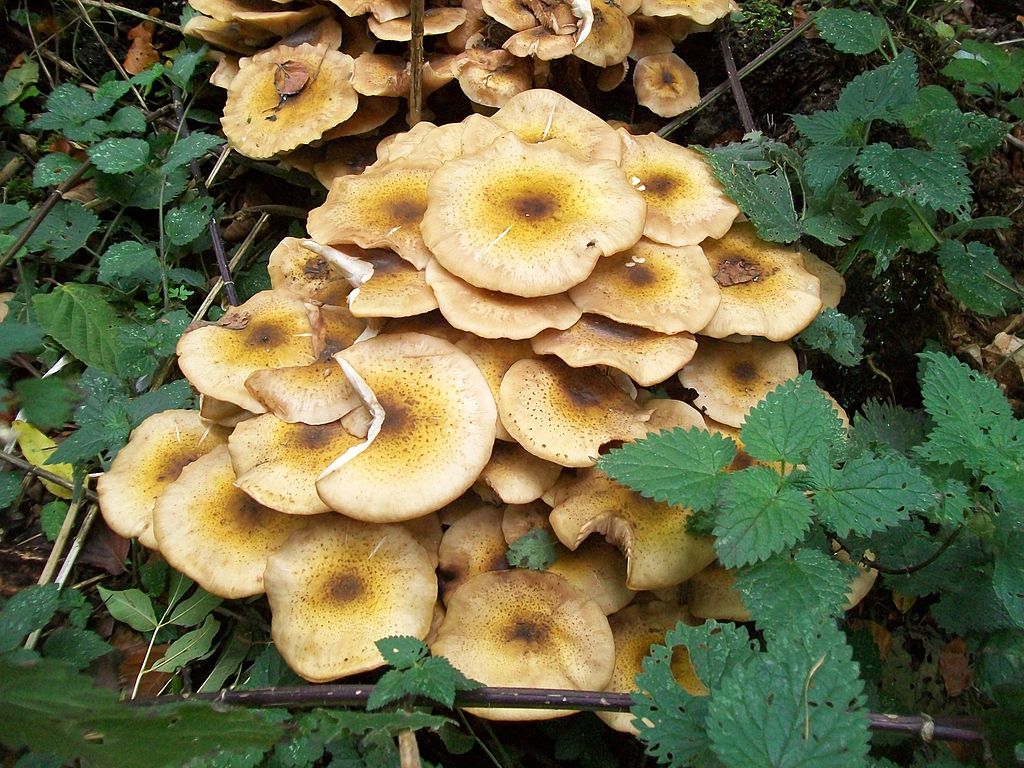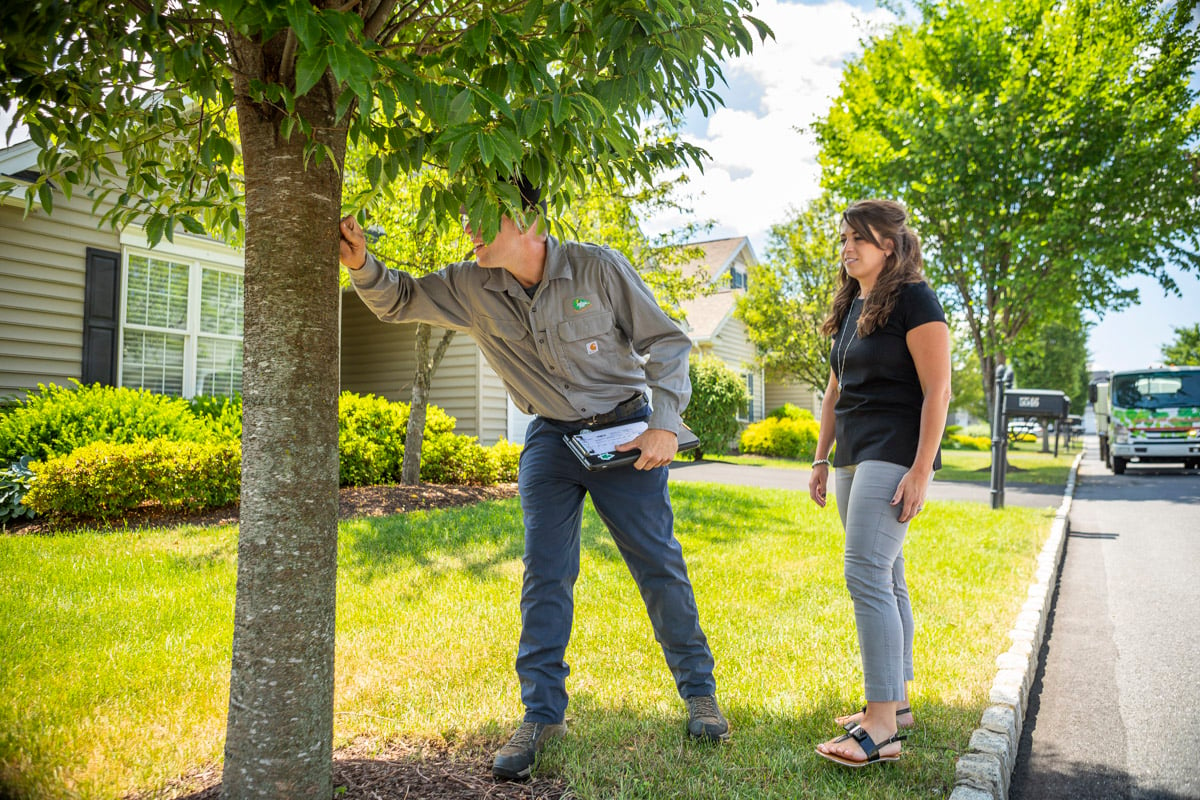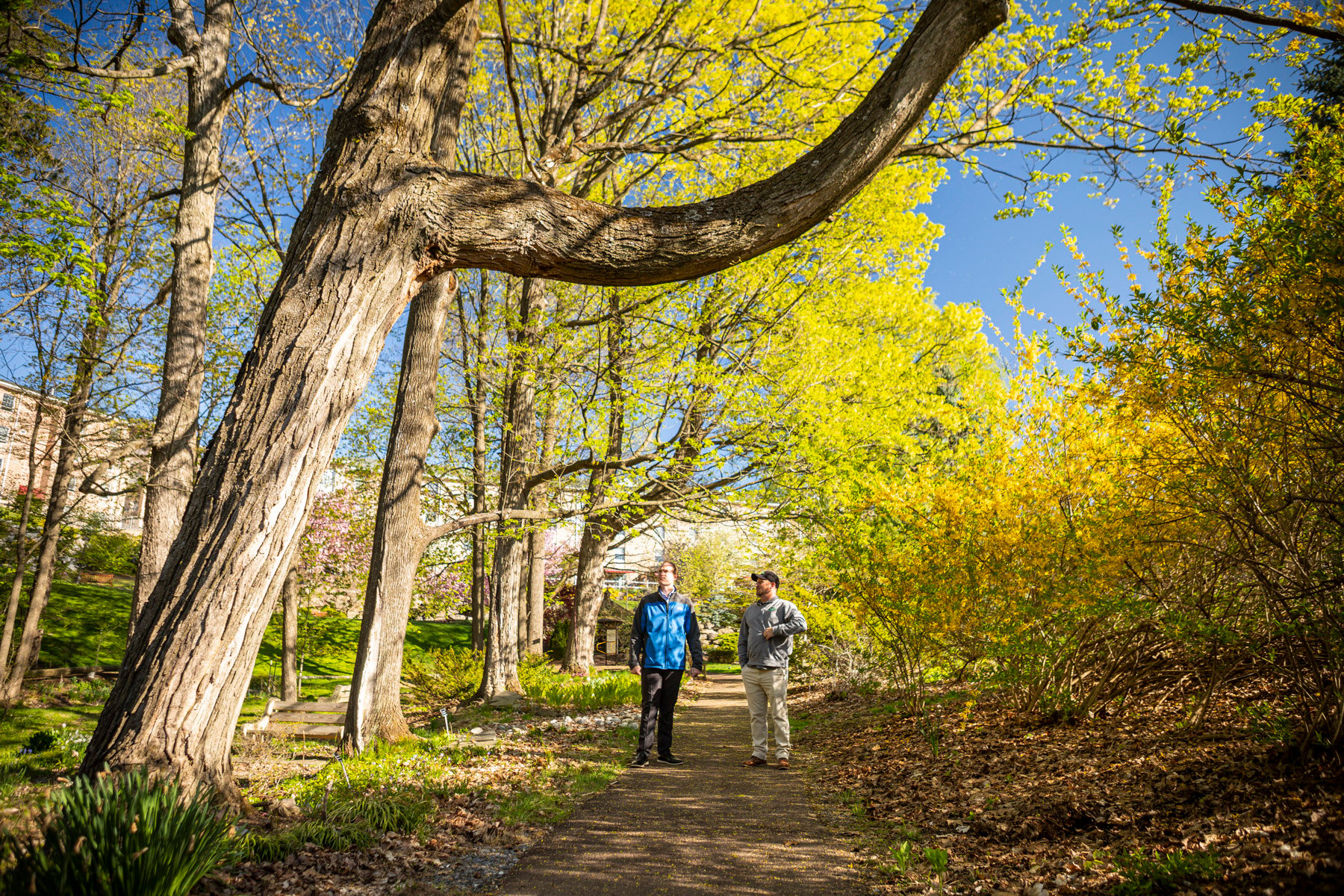You’ve probably seen mushrooms growing in your grass, flower beds, or other areas before…and you might not think much of it.
Mushrooms sometimes pop up after periods of a lot of rain and they aren’t necessarily a bad thing. On the lawn, they can be a sign that your yard has a lot of organic material, which can be good.
However, mushrooms on trees can be a bit of a different story. In certain situations, mushrooms growing at the base of a tree (or on the tree itself), can be a problem.
In this article, we’ll dive more into this issue and what you should know.
What Does It Mean to See Mushrooms Growing at the Base of a Tree?
You want to understand why are mushrooms growing at the base of my tree. First and foremost, we want to be clear that not all mushrooms are a problem.
In fact, just like your lawn’s mushrooms can be the result of healthy, organically rich soil, mushrooms at the base of a tree could be in connection to healthy roots.
But that’s not always the case. Sometimes, mushrooms growing at the base of a tree can be harmful. One type of mushroom, in particular, is honey fungus.

Honey fungus is a yellow-brown mushroom that grows in clusters around a tree’s roots. They have flat tops and even give off a sweet scent. Honey fungus tends to be particularly attracted to oak trees, so if you have one or more oaks on your property, be aware.
Birch trees, hedge plants, and fruit trees are also impacted by honey fungus.
Unfortunately, these fungi can cause a lot of trouble for your tree. They attack the tree and can cause early leaf drop. In time, honey fungus can also lead to root decay and kill the roots (which will kill the tree).
While other types of fungus aren’t as much of a problem, it’s important to mention that mushrooms can sometimes also be an indicator that a tree is dead or dying. That’s because mushrooms love dead wood.
If you suddenly have large areas of mushrooms growing, it could indicate that they are feeding on your tree’s decaying wood.
What to Do About Mushrooms Growing at the Base of a Tree
Honey fungus will attack your tree roots, which can lead to its death. Once a tree’s roots are infected, it can be tough to control. In fact, your tree can quickly become unstable, and tree removal might be your best option if that’s the case.
While it is always sad to see a tree go, whenever safety is a concern, it is always best to be cautious. Rather than fighting an uphill battle, sometimes this is the quickest and safest route to take.

Since honey fungus can be difficult to control, it’s important to think about prevention. As we’ve talked about in previous articles, take care to avoid overwatering your trees. Honey fungus thrives in wet conditions.
Signs of an overwatered tree include:
- Soil that is damp and swampy
- Young leaves that turn light green or yellow
- Brittle green leaves
- Young shoots that look wilted
- Moss, algae, or mushrooms growing
You also want to be careful to protect your tree’s roots from injuries and damage. Mower and other injuries can leave your tree’s roots susceptible to problems, like fungus.
Pest infestations can also leave your trees more likely to be attacked by disease. It can be a vicious cycle as once a tree is sick, it can become more prone to other problems. That’s why preserving your tree’s health is so important.
A Certified Arborist on your Side
Problems like these can be stressful. You might not always know the best way to handle them, which is why it helps to have a professional on your side.
Even though not all mushrooms are going to be a problem, it’s always worth checking in with an expert about what you should do.
If you see mushrooms growing at the base of a tree it’s important to get in touch with a tree care expert that can determine exactly what is going on and how best to proceed.
If it ends up being a problematic type of fungi, then you want to avoid having the problem spread to other areas of your property and infecting other plants. Because honey fungus spreads beneath the surface, a Certified Arborist can also inspect nearby plants to see if they might have been infected.
Choosing a Tree Care Service You Can Trust
Tree care issues can be complicated. When you have mushrooms on trees it can sometimes be a problem and other times it’s not as big an issue. But an expert can help.
This is why it’s incredibly valuable to partner with tree care services that you truly trust. This would mean choosing a tree care service that employs Certified Arborists on staff.
When you have a Certified Arborist visiting your property regularly, you can gain peace of mind that they’ll spot potential problems early and develop action plans appropriately. Yes, sometimes that action plan might mean tree removal. But other times, there are issues that can be treated and/or cured.

The key is to get the proper diagnosis so that you can move forward with confidence. Mushrooms on trees are just one of many potential problems that a tree can face and you should have a professional that can deal with all of it.
At Joshua Tree Experts, we take all of this seriously. We recognize the important role that we play in helping to maintain your tree health.
We also know that many issues are complex. But when you hire a Certified Arborist from Joshua Tree Experts, you can feel confident that your tree health needs are being met.
At the end of the day, your wise choice in selecting an experienced tree service will allow you to cast your fears aside. With a true tree care expert handling your mature trees, there simply won’t be any reason to worry.
With the right care for your trees, you’ll gain valuable peace of mind. If you’re interested in having your trees inspected and their health assured, contact us for a free consultation or give us a call at 833-JTE-TREE.
Image Source: honey fungus



